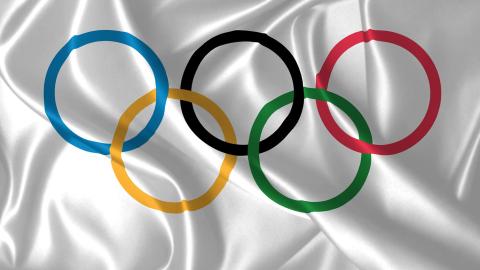

1956 Olympics – home movies
Budding filmmakers at the 1956 Olympics
There were several future film and TV makers shooting home movies at the 1956 Olympic Games in Melbourne, which ran from 22 November to 8 December 1956.
Bruce Beresford
Oscar-nominated film director Bruce Beresford (Breaker Morant,1980; Driving Miss Daisy, 1989; Mao’s Last Dancer, 2009) was 16 when he shot this 8mm home movie footage in Melbourne. This excerpt features shots of Melbourne streets, Olympic banners, crowds, the Olympic Village and athletes as well as the soccer semi-final between Bulgaria and the Soviet Union:
Home movie footage of 1956 Summer Olympics in Melbourne, shot by Bruce Beresford. Note: this clip is silent. NFSA: 27650
Mike Leyland
Future adventurer Mike Leyland entered a cartoon competition at age 15 and received a letter from country singer Smoky Dawson telling him he’d won a trip to the Games of the XVI Olympiad. His father bought him a 16mm movie camera and Mike recorded his experiences, even making his own opening and end credits.
As can be seen in the clip below, Mike was lucky to have a seat close to the track for the opening ceremony. He filmed athletes from France, Great Britain and Northern Ireland, India and Australia as they passed by, the lighting of the Olympic Cauldron and a number of events including the walk, hurdles, hammer throw, running and boxing:
Mike Leyland home movie footage of Summer Olympics in Melbourne, 1956. Note: this clip is silent. NFSA: 1152323
Two decades later, Mike and his brother Mal Leyland became household names thanks to their travel adventure series Ask the Leyland Brothers (1976–80, 1983–84) which paved the way for future TV personalities like Steve Irwin and programs like Getaway (1992–current) and The Great Outdoors (1993–2009, 2012).
Sir Robert Menzies
Australia’s longest serving prime minister was also a keen amateur filmmaker. Having shot 16mm footage of the London Blitz, the Churchill family at home and members of the British Royal Family, it was no surprise that Menzies took his camera to the Olympics.
This footage includes the flags of competing nations around the perimeter of the main stadium; various track events, including the women’s and men’s relays and 800 metres races; and Betty Cuthbert winning a 200 metres heat. Cuthbert, then 18 years old, won three sprinting gold medals in the 100 metres, 200 metres and 4 × 100 metres relay at these Olympics and became known as Australia’s ‘Golden Girl’:
Sir Robert Menzies' home movie footage of the Olympic Games in Melbourne, 1956. Footage courtesy of Heather Henderson. Note: this clip is silent. NFSA: 57039
The National Film and Sound Archive of Australia acknowledges Australia’s Aboriginal and Torres Strait Islander peoples as the Traditional Custodians of the land on which we work and live and gives respect to their Elders both past and present.


